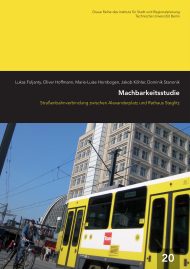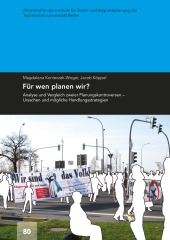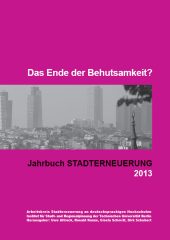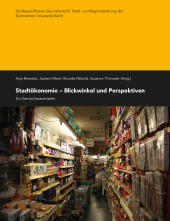Machbarkeitsstudie Straßenbahnverbindung zwischen Alexanderplatz und Rathaus Steglitz

Format: 21,0 x 29,7 cm
Publishing year: 2009
In the past decade a tram renaissance could be observed in many European metropolis. Almost all major French cities have built tram systems since the 1990s. London is investing a significant amount of money in a new tramway link. Hamburg just recently decided to reintroduce the tram. In contrast to this development, the debate on an enlargement of the existing tramway network has come to a halt in Berlin over five years ago. While the existing network in the eastern part of the city is in very good condition and is the largest network in Germany, efforts for an extension to former West-Berlin after the reunification have been rather fainthearted with only two new tracks. The effort today is limited to the connection of the new Berlin central railway station which is currently undergoing its planning approval. In this feasibility study the corridor between Alexanderplatz in the center of Berlin and Rathaus Steglitz in the southwest of the city was assessed on its suitability for a tramway link. The corridor was chosen because of the extremely high traffic load with over 55 000 vehicles per day and the obvious unreliability of the existing public transport service with busses. Furthermore, multiple neighborhoods along the assessed tramway link show indications of urban downgrading. Hence, the study tried to examine and discuss the impacts of an improved public transportation on the quality of life of the residents. The study took a multi-dimensional approach consisting of transportation planning, urban design, market predictions, economic and ecologic assessments and considerations of the social impacts.



